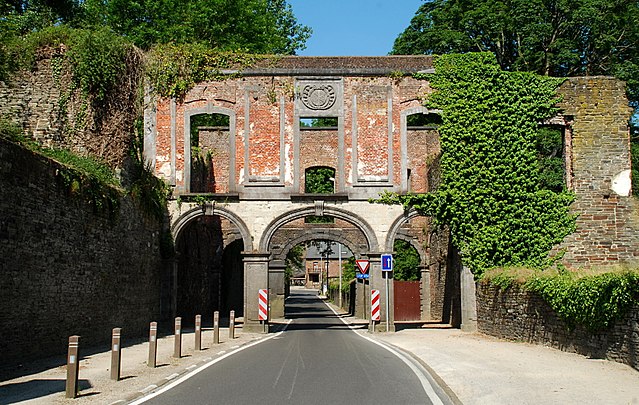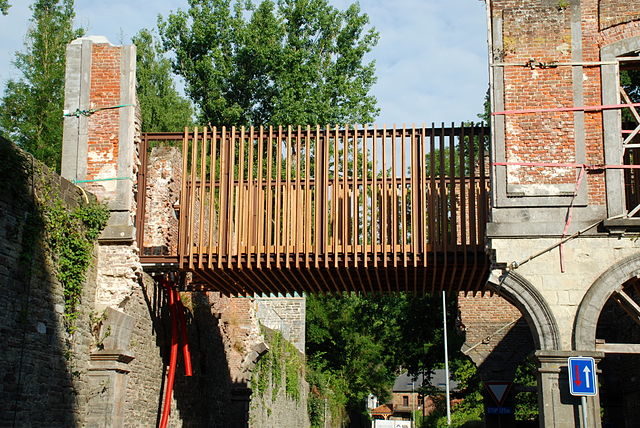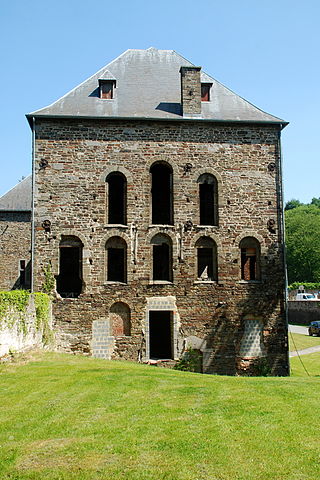Some ruins around the world are so majestic, picturesque and strangely blend with the environment that they seem like they didn’t come out of a glorious past, but more from an unknown future. Such ruins vividly tell us not only about the past, but also how the future could look if man lives in harmony with nature and respects the ruins from the past.
Villers Abbey is one of those positive examples. The ruins, located in the Commune of Villers-la-Ville in Belgium, are more than 900 years old, but some parts of it look quite futuristic. Recently a group of modern architects renovated some of the surviving parts, keeping the same characteristic medieval architecture. In the interior of the old mill of the abbey, which today is a visitor center, they made a few reconstructions using natural and new materials.

Pathways and bridges from stone and wood were also built across the ruins for better movement and enjoyment of the site, which has area of 90 acres.The abbey was founded in 1146 by a group of Cistercian monks under the patronage of St Bernard. The buildings that were erected in this period are gone forever. Most of the buildings that can be seen today on the site are from the 13th century, also known as the first golden age of the abbey, when the complex was entirely reconstructed. During the 16th century came the bad days for the abbey.

Villers Abbey was attacked a nine times, forcing the monks to abandon the site.
In the 18th century came the second golden age, which lasted only for a short period of time. The whole complex was partially destroyed in 1789 and later in 1794. It was completely abandoned in 1796. The main reason why the life at the abbey stopped was the beginning of the French Revolution and the turbulent events that came out from it.

At the end of the 19th century, the Belgian government became owner of the central part of the abbey’s property and started with restoring and conserving of the buildings. The construction of a railway made better connection of the site with Brussels and many people started to visit the romantic ruins. The old mill was reconstructed and adapted into a hotel. Among the numerous visitors to stay there was Victor Hugo, who wrote about the abbey prison in his masterpiece Les Misérables.


While most of the buildings of the former abbey are only partially destroyed, there are some parts of it, like the home and infirmary of the converts and the dormitory of the monks, that were demolished entirely throughout the years, but today, their foundations are still visible. With a little help of the imagination, every visitor can easily picture the daily routine of the monks of the Cistercian order.

Literally the Villers Abbey looked like a little town. According historic documents, at its peak nearly 400 monks and lay brothers lived and worked within the walls. They produced many agricultural products that were sold in the nearby towns. The abbey had property of more than 38 square miles, with many fields, forests, pastures and vineyards. The complex was under protection of the Dukes of Brabant.

Today at the site can be seen the remains of many buildings, like the cloister, dormitories, the old brewery house, kitchens and monk’s refectory. But, the most impressive are the ruins of the Cistercian church. Although partially overgrown with vegetation, it still radiates with magical beauty. The roof is intact and the towering nave is heavenly beautiful. The arches, the vaults and the rose windows are a combination of Gothic and Romanesque architecture.

Probably one of the most attractive parts of the site are the four medieval style gardens. Two of them were opened in 2012, the Medical Herb Garden and the Pharmacy Garden, and two new gardens were opened in 2015. The gardens were inspired by Hildegard of Bingen, a 12th-century abbess whose work was based on natural remedies. The old abbey’s laundry is adapted into a brewery and produces four beers from old recipes.

The interior of the mill is reconstructed with new materials and in interactive and futuristic way tells the story about one of the most important abbeys of the order. It has a visitor center with a shop, a museum of the Cistercian order and a models room.

Villers Abbey is the most visited Belgian ruins, where organized guided visits, open-air concerts, theater performances and art exhibitions are held.
